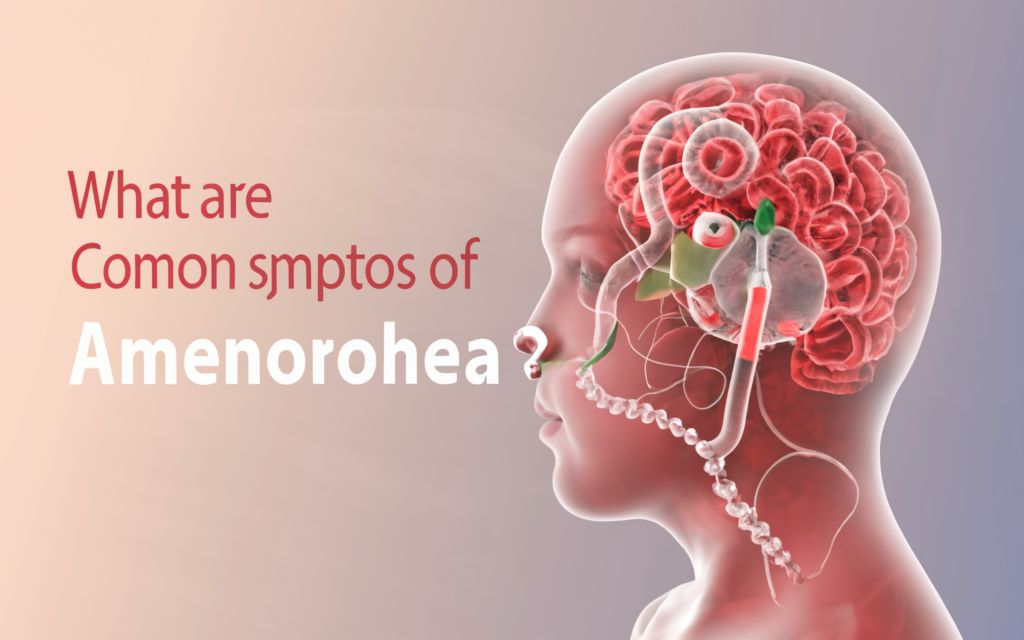Amenorrhoea, the absence of menstrual periods, is a multifaceted condition with various underlying causes. Understanding its intricacies, diagnosis, and treatment options is crucial for individuals experiencing disruptions in their menstrual cycles.
What is Amenorrhoea, and What Causes It?
Amenorrhoea is characterized by the absence of menstrual periods in women of reproductive age. It can be classified into primary amenorrhoea (no periods by age 15) and secondary amenorrhoea (cessation of periods for at least three months in women who previously had regular cycles). Causes of amenorrhoea may include hormonal imbalances, stress, excessive exercise, polycystic ovary syndrome (PCOS), thyroid disorders, and certain medications.
How is Amenorrhoea Diagnosed?
Diagnosis of amenorrhoea involves a comprehensive evaluation of medical history, physical examination, and laboratory tests. These may include hormonal assessments, imaging studies (such as ultrasound), and evaluation of potential underlying medical conditions.
What are the Different Types of Amenorrhoea?
Amenorrhoea can be categorized into two main types: primary and secondary. Primary amenorrhoea refers to the absence of menstruation by age 15, while secondary amenorrhoea occurs when a woman previously experienced regular menstrual cycles but has ceased menstruating for at least three consecutive months.
What are the Common Symptoms of Amenorrhoea?

Common symptoms of amenorrhoea may include abdominal discomfort, changes in mood, weight fluctuations, hot flashes, and vaginal dryness. Additionally, underlying conditions causing amenorrhoea may present with symptoms specific to the condition.
Treatment Options for Amenorrhoea:
| Treatment Option | Description |
|---|---|
| Hormonal Therapy | Hormonal therapy, such as birth control pills or hormone replacement therapy, may help regulate menstrual cycles and restore hormonal balance. |
| Lifestyle Modifications | Making lifestyle changes, including reducing stress, maintaining a healthy weight, and moderating exercise intensity, can help manage amenorrhoea associated with lifestyle factors. |
| Dietary Adjustments | A balanced diet rich in nutrients, including vitamins and minerals, can support reproductive health and hormone balance. Incorporating iron-rich foods may help prevent anemia associated with amenorrhoea. |
| Addressing Underlying Medical Conditions | Treatment of underlying medical conditions contributing to amenorrhoea, such as thyroid disorders or PCOS, may involve medication, dietary changes, or surgical interventions. |
| Alternative Therapies | Alternative therapies, such as acupuncture or herbal supplements, may be considered as adjunctive treatments for managing amenorrhoea symptoms, although scientific evidence supporting their efficacy is limited. |
Can Medications or Hormonal Therapy Help Regulate Periods in Cases of Amenorrhoea?
Medications and hormonal therapy, such as birth control pills or hormone replacement therapy, may help regulate menstrual cycles and restore hormonal balance in cases of amenorrhoea. These treatments work by mimicking the natural hormone fluctuations of the menstrual cycle and promoting regular menstruation.
Is Amenorrhoea Reversible?
In many cases, amenorrhoea is reversible with appropriate treatment and lifestyle modifications. By addressing underlying causes, restoring hormonal balance, and adopting healthy habits, many individuals can regain regular menstrual cycles and reproductive health.
Lifestyle Changes to Manage or Prevent Amenorrhoea:
| Lifestyle Change | Description |
|---|---|
| Stress Reduction | Stress management techniques such as mindfulness, meditation, yoga, and relaxation exercises can help reduce stress levels and restore hormonal balance. |
| Healthy Diet | Adopting a balanced diet rich in fruits, vegetables, whole grains, lean proteins, and healthy fats can support reproductive health and hormone balance. |
| Moderate Exercise | Engaging in regular, moderate exercise can promote overall well-being and hormone regulation. However, excessive or intense exercise may contribute to amenorrhoea and should be moderated. |
| Adequate Sleep | Prioritizing adequate sleep is essential for hormone regulation and overall health. Aim for 7-9 hours of quality sleep per night to support reproductive function. |
| Weight Management | Maintaining a healthy weight through balanced nutrition and regular exercise can help regulate menstrual cycles and reduce the risk of amenorrhoea associated with weight fluctuations. |
Natural Remedies or Alternative Therapies for Amenorrhoea:
While scientific evidence supporting the efficacy of natural remedies or alternative therapies for amenorrhoea is limited, some individuals may find relief from symptoms through:
- Herbal Teas: Herbal teas containing ingredients like ginger, cinnamon, and chasteberry may help regulate hormonal balance and promote menstruation.
- Aromatherapy: Essential oils such as clary sage, lavender, and rosemary may have hormonal-balancing properties when used in aromatherapy or diluted and applied topically.
- Nutritional Supplements: Certain nutritional supplements, such as vitamin D, magnesium, and omega-3 fatty acids, may support reproductive health and hormone balance.
References:
- Mayo Clinic. “Amenorrhoea: Diagnosis & Treatment.” (mayoclinic.org)
- American College of Obstetricians and Gynecologists. “Practice Bulletin No. 141: Management of Menstrual Disorders.” Obstetrics & Gynecology, vol. 118, no. 3, 2011, pp. 730-740.
- National Institute for Health and Care Excellence (NICE). “Heavy Menstrual Bleeding: Assessment and Management.” Clinical Guideline [CG44], 2007.
- American Family Physician. “Amenorrhoea: An Approach to Diagnosis and Management.” American Family Physician, vol. 91, no. 9, 2015, pp. 581-586.
FAQs:
- Is Amenorrhoea a Sign of Pregnancy? Amenorrhoea can be a sign of pregnancy, especially if menstruation has ceased in a woman of reproductive age who is sexually active and not using contraception.
- What Medical Conditions Can Cause Amenorrhoea? Medical conditions that can cause amenorrhoea include polycystic ovary syndrome (PCOS), thyroid disorders, pituitary disorders, premature ovarian failure, and structural abnormalities of the reproductive organs.
- Can Stress or Lifestyle Factors Contribute to Amenorrhoea? Yes, stress, excessive exercise, significant weight loss or gain, poor nutrition, and other lifestyle factors can disrupt hormonal balance and contribute to amenorrhoea.
- What are the potential complications of untreated amenorrhoea? Untreated amenorrhoea can lead to several potential complications, including:
- Bone Health Issues: Prolonged absence of menstruation can increase the risk of osteoporosis and bone fractures due to decreased estrogen levels.
- Fertility Problems: Amenorrhoea can impair fertility by disrupting ovulation and menstrual cycles, making it challenging to conceive.
- Hormonal Imbalance: Amenorrhoea may indicate an underlying hormonal imbalance that can affect overall health and well-being.
- Psychological Effects: Untreated amenorrhoea can have psychological effects, including stress, anxiety, and depression, particularly if fertility concerns are present.
- Can exercise or athletic training cause amenorrhoea? Yes, intense or excessive exercise, particularly in athletes and dancers, can lead to a condition called exercise-induced amenorrhoea. This occurs due to alterations in hormone levels caused by strenuous physical activity, which can disrupt the menstrual cycle and lead to the absence of periods.
- Is amenorrhoea common during menopause? Amenorrhoea is a natural occurrence during menopause, which marks the end of a woman’s reproductive years. As women approach menopause, hormone levels fluctuate, leading to irregular menstrual cycles and eventual cessation of periods. However, if menopause occurs before the age of 40, it is considered premature menopause and may result in amenorrhoea.
- How does amenorrhoea affect fertility and reproductive health? Amenorrhoea can significantly impact fertility and reproductive health by disrupting the menstrual cycle and ovulation. Without regular menstruation, the chances of conception are reduced, making it difficult for women to become pregnant. Additionally, underlying conditions causing amenorrhoea, such as polycystic ovary syndrome (PCOS) or thyroid disorders, can further complicate fertility issues. It is essential for individuals experiencing amenorrhoea and fertility concerns to consult with a healthcare provider for evaluation and appropriate management.





